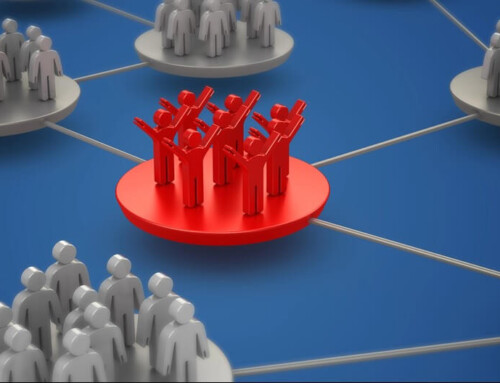Excellent verbal communication is a key characteristic of a good leader and a core leadership function. Effective leadership and communication are like a glove in a hand. Leaders need to be skilled communicators in all relationships, not only in their organization but also in communities and groups, sometimes on a global scale.
Effective communication is a vital skill for achieving success in all aspects of life, whether personal or professional. Communication skills breed confidence and optimism, two-character traits that enable individuals to accomplish goals. Communication is at the core of every meeting, whether one-on-one or within a set of hundreds of people.
What prevents effective communication?
- Lack of Planning – no clear agenda, no strategy, no goal, objective, or desired outcome.
- Lack of Clarity/Focus – distractions (e.g., phone, email, texts, etc.), multi-tasking (e.g., fiddling with a phone while trying to locate handout pages and listen, eavesdropping on another conversation, discomfort due to seating/temperature/lighting/airflow, etc.)
- Communicator Issues — lack of interest in the person or subject matter, finding the communicator unattractive, something distracting about the communicator’s appearance is distracting, having a bad or uncomfortable prior history with the communicator, etc.
- Emotions – emotional overwhelm, overworked, too tired, hungry, frustrated with someone/something else, stressed out/not relaxed, not in the right mindset, the difference in perception or viewpoint.
- Body language – nonverbal signals can be a big problem, whether it’s giving off the wrong body language or misreading it from someone else. (e.g., eye-rolling vs. trying to stay awake; discomfort from pain or the environment vs. discomfort from the conversation; body language that is inconsistent with words, such as slamming papers on the desk while stating, “I’m not upset.”).
- Differing communication styles – the assumption that everyone communicates the same way or the same way you do can be a problem. Some people want every detail and treasure the minutia. Others want to have the highlights or bullet points. Some want to know the data. Others will need it repeated (and repeated again and again). Some prefer to read it. Others need to see it in pictures or diagrams. Some need to hear it or somehow interact with it (e.g., smell it, touch it, feel it, etc.) Some are direct and brief, while others carefully select words. The use of jargon, industry terminology, and million-dollar words versus simple English can also impact communication and understanding.
- Distrust and lack of transparency – not being honest, holding back information, or having a history of either may be a communication deficit. A workplace morale killer is rumors, gossip, and speculation that aren’t shut down quickly with accurate information.
- Hearing vs. actively engaged – hearing words but concentrating more on what you want to say, rather than actively listening and being engaged in the conversation, is a conflict that can lead to communication problems. Additional issues that distinguish between hearing and actively engaging include, but are not limited to, formulating opinions, judgments, and criticisms. Always ready with a solution instead of offering the communicator a chance to develop thoughts, ideas, etc., on their own, rushing or finishing the communicator’s sentences, and misrepresenting what the communicator said because the listener wasn’t actively engaged.
How to be a better communicator:
- Actively listen – Engage in what the communicator is saying vs. just hearing the spoken words. Do this by using body language (e.g., nodding your head and smiling to acknowledge. Avoid coming across as “closed off” by not crossing your arms; instead, keep your body open, maintain eye contact, and so on. Lean in or a half-step closer to indicate you’re genuinely invested in what the communicator is saying.
- Encourage the conversation. Use words to acknowledge what is being said – I hear you; I understand what you are saying, interesting point, tell me more, etc.
- Don’t interrupt. Not interrupting can be difficult, especially if you have something you want to interject. Resist the urge and focus on the emotion and words rather than yourself. And by all means, avoid rushing the conversation or finishing the communicator’s sentences (unless you can see the communicator is struggling to locate the right word!). If the time to communicate is short, ask the communicator if they would like to reschedule to allow them more time.
- Consider individual differences. The world we live in is a very (very) diverse world. Even people who grew up in the same homes with identical upbringings can have very different life experiences and perspectives. People can differ in various aspects, including global and cultural perspectives. The sports teams they love (or love to hate). Food and drinks. Family status. Hobbies and favorite activities. Pets and the kinds they like (or fear). The job and role they hold. Their financial status and plans. Career goals. Retirement plans. Skills and talents. Interests and dislikes. The list goes on. Therefore, communication can be vastly different in both verbal and non-verbal methods.
- Avoid criticism and judgment. While feedback is essential to a healthy conversation, it’s different than criticism and judgment. Know the difference. (e.g., criticism/judgment – you disagree, think something is ridiculous, opinioned, etc. Feedback is a way to provide perspective through reflection. For example: “When you said XYZ, what did you mean?” or “What I heard when you were describing, ABC was PDQ. Is that what you meant?”
- Develop strong empathy as well as assertion skills. It’s essential to put yourself in other people’s shoes, but there are times when boundaries may need to be enforced. For example, if a worker is suddenly more emotional than usual and causing morale issues, it’s ok to listen and empathize with their situation. But it’s also ok to assert boundaries. For example: “Paul, I’m sorry to hear that you’ve been under so much stress with your father’s terminal disease. However, you’re bringing that stress to the office, which impacts other workers and their morale. How can I help you with your stress levels right now?” This approach might result in requests for help that a worker doesn’t know how to ask for or fears admitting that they may need. If the pattern continues with a worker, leaders can still have empathy. Still, they may need to establish firmer boundaries, such as delegating work to others to alleviate stress, advising the worker to take a few days off to destress, and ultimately, even termination.
- Read nonverbal communication as a group when doing group meetings. It can be easy to let one or two people dominate a meeting while others sit back and watch the action. However, whether it’s a presentation, training, or a meeting, pay close attention to how all participants respond with nonverbal body language. Do they seem engaged, nodding heads and smiling? Or are they crossing their arms with their lips tightly pressed together? Are they actively taking notes, asking questions, and leaning forward to signal engagement? Are they only engaged with a report, or does another document require a page to be turned?
PRO-TIP: In meetings outside of the office, consider using apps to access how things are going in semi-real time.
- Learn to take feedback with a positive attitude. Feedback can provide valuable insights into what is well done. Accept compliments graciously and without gloating. Feedback can also be beneficial to learn from issues, problems, and errors to prevent mistakes from happening again. There is always room to improve. It doesn’t matter what stage of development anyone is in with their career! It’s also an excellent opportunity to get additional training that might be specific to an industry or market, ask for help, study more details, etc., so you’re better prepared the next time around.
- Your opinion matters too. Communication should be more two-way rather than a one-way broadcast. Whether you’re a leader or a worker, your opinion is essential. This doesn’t necessarily mean it needs to be hurtful or cruel to make your point. Often, people want only to hear what they agree with, and it can be difficult to hear something that challenges their perspective, opinion, status quo, or way of doing things. However, if you’ve taken the time to lean in to listen to them, you deserve the same kind of healthy listening to your opinion or feedback, primarily when they’ve involved you in the matter.
- Learn the skill of disagreeing without being disagreeable. In a world where everyone has opinions and can often be vastly different, the ability to have civil discourse can be lost. Healthy debate can be good even if no one comes to the same conclusion. It can be challenging to recognize that disagreement with someone’s opinion doesn’t necessarily mean there are no valid points. The person holding the opinion is still worthy of respect and dignity, and it’s ok to agree to disagree. While some topics, such as ethics, may have clear-cut black-and-white boundaries, others, like how to perform a specific task, may not be as straightforward. Choosing to value a relationship over winning can often assist in future communication. In the same respect, choosing what is best for the company or other stakeholders over what might be self-serving may be a hurdle for some without significant self-reflection.
- No is a complete sentence. Leaders can’t always appease everyone all the time. Time management can go haywire if everything becomes a yes and a top priority. Therefore, there are times when “no” must be an answer. Everyone needs to understand that “no” isn’t an answer intended to be hurtful, but rather to establish boundaries and to prevent anyone from taking advantage of time, resources, and your goodwill. Leaders may want to quantify “no” for more transparent communication:
- “No, for now. However, I would like you to conduct some additional due diligence. This response has some substance, but it needs further refinement. Let’s set up some time over the next couple of weeks to hash out a plan to see how we can get a green light.”
- “No, for now. Budgets are already pushed through. Let’s readdress this in 6 months when we have more time to evaluate it, and we’re analyzing budget needs then.”
- “No. Thank you for your efforts, etc., but… This isn’t a good fit for the company or the stakeholders. We’ve decided to go in a different direction. We’ve decided this isn’t an interest. Rocking the status quo is too much for us to take on right now, etc.”
- “No. This has been addressed before, and you were told no then. For the same reasons, it is a no now.”
Excellent communication skills will enhance corporate relationships with vendors and customers. Practical communication skills will enable the organization to achieve its vision, mission, and values.
Discover more inspiring ideas for exciting experiences that boost morale and engage your people. Contact Gavel International for details.
This article was last updated on June 13, 2025






